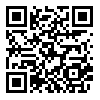Volume 12, Issue 2 (2021 2021)
JIM 2021, 12(2): 243-267 |
Back to browse issues page
Download citation:
BibTeX | RIS | EndNote | Medlars | ProCite | Reference Manager | RefWorks
Send citation to:



BibTeX | RIS | EndNote | Medlars | ProCite | Reference Manager | RefWorks
Send citation to:
Naghdebishi M, Faali M T. (2021). The Comparative Methodology of Reynold Nicholson and William Chittick in Sufism Studies. JIM. 12(2), 243-267.
URL: http://erfanmag.ir/article-1-991-en.html
URL: http://erfanmag.ir/article-1-991-en.html
Mashhad Justice
Abstract: (2242 Views)
Abstract:
This survey, with a comparative approach, deals with criticism of Reynold Nicholson(1868-1945) and William C.Chittick 's (1943- ) methodology in Sufism (with emphasis on Rumi and Ibn Arabi). The purpose of the methodology review of these western mysticists is not only the better cognition the rules and criterias of religious studies and specially sufism, but also to investigate the intellectual background and origin of the two scholars' viewpoints and to pave the way to discovery of subtleties of thought and their differences and points of view. The present article, in a descriptive-analytic method, has attempted to plug the gap of existing such approach, as much as possible. Analyzing the methodology of these two scholars in the field of Islamic mysticism reveals different information sources and distinct conclusions. In an analytical-critical approach, to Nicholson's idea, Chittick emphasizes the in-text analysis of the works of these mystics and in fact understands the intellectual angles of thinkers such as Ibn Arabi and Rumi in understanding theire world-view through their works and taking full advantage of their words and imaginary forms knows, though neglecting to some of Nicholson's works and perhaps the inconsistency of his views, has made Chittick a incorrect judgment.
This survey, with a comparative approach, deals with criticism of Reynold Nicholson(1868-1945) and William C.Chittick 's (1943- ) methodology in Sufism (with emphasis on Rumi and Ibn Arabi). The purpose of the methodology review of these western mysticists is not only the better cognition the rules and criterias of religious studies and specially sufism, but also to investigate the intellectual background and origin of the two scholars' viewpoints and to pave the way to discovery of subtleties of thought and their differences and points of view. The present article, in a descriptive-analytic method, has attempted to plug the gap of existing such approach, as much as possible. Analyzing the methodology of these two scholars in the field of Islamic mysticism reveals different information sources and distinct conclusions. In an analytical-critical approach, to Nicholson's idea, Chittick emphasizes the in-text analysis of the works of these mystics and in fact understands the intellectual angles of thinkers such as Ibn Arabi and Rumi in understanding theire world-view through their works and taking full advantage of their words and imaginary forms knows, though neglecting to some of Nicholson's works and perhaps the inconsistency of his views, has made Chittick a incorrect judgment.
Type of Study: Research |
Subject:
عرفان
Received: 2019/08/13 | Accepted: 2019/10/22 | Published: 2021/08/22
Received: 2019/08/13 | Accepted: 2019/10/22 | Published: 2021/08/22
Send email to the article author
| Rights and permissions | |
 |
This work is licensed under a Creative Commons Attribution-NonCommercial 4.0 International License. |


